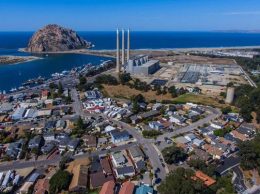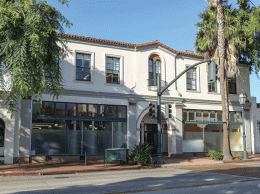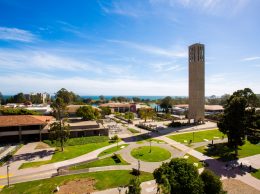A new Central Coast tech venture capital fund will give entrepreneurs in the Highway 101 corridor another avenue for funding.
Santa Barbara Technology Ventures seeks to invest primarily in tech startups by having a close affiliation with companies coming out of UC Santa Barbara and Cal Poly San Luis Obispo, according to a Sept. 1 fund summary obtained by the Business Times.
Managers of the fund said in the document that the region is underserved and that no venture capital funds exist in the region specifically to fund early-stage tech companies.
“While the Santa Barbara region has a wealth of engineering and technology (and) innovation resources, experienced early-stage company leadership has historically been scarce,” the document said.
“Despite having a wealth of technology and software, the area has been underserved by technology and venture capital,” said Jason Spievak, founder and executive vice president of Santa Barbara-based inbound call technology firm Invoca.
Experts at UCSB agree.
Sherylle Mills Englander, director of the UCSB Office of Technology and Industry Alliances, said that local funding sources for the region’s companies are scarce.
“There are a lot of really great angels that have backed startups in the early stages,” Mills Englander said. “But when it comes to raising venture capital a lot of our companies have to look to San Diego, Los Angeles or San Francisco because our community is a little smaller.”
The region has a short history of funding. The Santa Barbara Technology Group was launched in 2000 as an incubator to invest in early stage companies. Now defunct, it had an office in downtown Santa Barbara and served the region the mid-2000s.
Rincon Venture Partners is currently the largest venture capital fund in the Tri-Counties. Rincon typically makes initial investments of $500,000 to $1.5 million and $3 million to $4 million over the life of a company.
DFJ Frontier has a more rocky history than Rincon. DFJ typically invests $100,000 to $1 million and makes follow-up investments as needed.
Bob York, a professor of computer and electrical engineering at UCSB, said Rincon typically invests in more established startups, rather than those coming out of universities.
“Certainly, from our perspective at the university, it has been somewhat challenging for entrepreneurs and people who don’t have a lot of experience to find funding.”
In 2007, the city of Ventura invested
$3 million in a second fund with DFJ and created a $1.6 million fund of its own for Ventura startups. Hampered by geographical constraints, though, the city’s investments struggled to gain traction.
Ventura invested $180,000 in online gift service Lottay, which is now out of business; $425,000 in MomentFeed, a location-based marketing service; and $500,000 in SwinkTV, which creates visual data maps of sports game footage to show where important plays happen.
Ventura’s investments helped launch the three companies, but the return for the city was debatable. MomentFeed and SwinkTV are now located in Santa Monica and San Francisco respectively.
Only one company the city invested in or housed at its incubator, Ventura-based digital marketing firm The Trade Desk, still is headquartered in Ventura.
The fund summary says the new fund plans to be comprised of about $30 million from private investors with an initial pool of $10 million, and a maximum of $50 million over the 10-year life of the fund.
Santa Barbara Technology Ventures plans to invest in 10 to 12 early-stage software and cloud-based tech companies during the life of the fund. It will also make initial investments of $500,000 to $2 million, and invest up to $5 million over the life of a company.
Representatives of Santa Barbara Technology Ventures could not be reached for comment.
In the fund summary, the group said 10,945 students are enrolled in engineering programs in the area, more than in the Boston, San Francisco or New York metropolitan areas. The group also said about 12 percent of early-stage startups come from Southern California.
Englander said that even without other venture capital funds, the Central Coast’s location between several large metropolitan areas helps Santa Barbara compete with other similarly-sized cities around the country.
“Santa Barbara is really lucky because we have so many great areas close,” Mills Englander said. “So while it is always great to have a local investor, Santa Barbara companies have a lot more options than a lot of companies have.”
Dina Lozofsky is the associate director of licensing and business development at the UCSB Office of Technology and Industry Alliances and works with startups that come out of UCSB.
Lozofsky said just having a new fund in the area will be important for local entrepreneurs.
“The more opportunities you have to pitch to investors the more chances you have to get funding,” Lozofsky said. ”The other nice thing about having a local presence by investors is then you can start a longer-term relationship with investors.”
Several sources interviewed by the Business Times said informal talks are underway to create another venture capital fund formally affiliated with UCSB.
“Anyone that’s looking to formalize venture funding here, I think that’s a positive for our community,” Spievak said of efforts to create more funds.






 Print
Print Email
Email

















